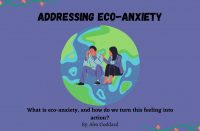DESPITE THE DIAGNOSES of spin doctors, an activist is not anti-government, anti-corporate, anti-Canadian or the antichrist. In fact, any citizen who tries to address important social and political issues is pro-democratic, patriotic and downright responsible. Get started with these tips:
DESPITE THE DIAGNOSES of spin doctors, an activist is not anti-government, anti-corporate, anti-Canadian or the antichrist. In fact, any citizen who tries to address important social and political issues is pro-democratic, patriotic and downright responsible. Get started with these tips:
1. Lobby for change
- Avoid motherhood statements and stick to critical details.
- Prioritize effective ideas on your long list of “right things to do.”
- Instead of “us versus them,” learn to speak in terms that are relevant to “them.”
- Stay focused on your goal.
2. Communicate to the masses
- Know and understand your target audience’s perceptions of barriers.
- Focus on changing peoples’ behaviour rather than their awareness.
- Make the desired behaviour more attractive than the current behaviour.
- Make it easy for the audience to try the new behaviour – and sustain it.
3. Contact your elected representatives
- Deliver a message via phone, letter, fax or email to show that you understand and are invested in an issue.
- Personalize your message. Describe why the issue is important to you and other constituents.
- Specifically request a reply and (if appropriate) to be kept updated with progress reports.
4. Get media coverage
- If you are knowledgeable about an issue, submit an op-ed to your local paper, or write a letter to the editor. These are underused but very powerful methods of influence.
- Directly contact local reporters and let them know why an issue is relevant to their audience.
- Be creative and produce your own public service message, then distribute it widely online.
5. Submit a petition
- If it is prepared and submitted correctly, any petition signed by 25 citizens must be read in the House of Commons by your Member of Parliament. Proper procedure is outlined by the Citizens for Public Justice.
- Read Eric Rumble’s editorial from the Heroes issue about “inking out power” and how to submit petitions.
6. Organize a demonstration
- Prepare information to hand out to passersby, including actions they can take.
- Involve your target audience. Invite community stakeholders, politicians and local media.
- Document or record the event. Send videos, photos and/or a press release to your representatives, local media and online social networks.
- Learn about taking direct action in our Activism 101 post.
7. Support these causes
- sciencewriters.ca aims to cultivate excellence in science writing and to increase public awareness of Canadian science.
- canadians.org – the Council of Canadians – promotes progressive policies on issues such as fair trade, clean water, energy security, GMO awareness and public health care.
- deathofevidence.ca protests the Harper government’s muzzling of scientists, changes to legislation and cuts to federal science programs.
- forestethics.org protects wild places in Canada and the US from deforestation, resource extraction impacts and weakened legislation.
- leadnow.ca is focused on mobilizing citizens to cooperate on electing a federal government that is more representative of Canada’s values.
8. Use these resources
- citizenshandbook.org by Charles Dobson is designed to assist citizens, especially those interested in public issues, to make an impact.
- democratize.ca provides a forum for issue-specific voting and aims to compel parliamentary representatives to consider the popular vote.
- rabble.ca/toolkit/guide covers current events and provides how-to guides on everything from confronting factory farms to starting a cooperative.
- toolsforchange.net encourages citizens to advocate for social, economic and environmental justice by producing resources, case studies and skills development workshops in Toronto.
- voices-voix.ca catalogues government attacks on free speech and offers resources for individuals to support transparency, equality and democracy in Canada.
9. Read more Alternatives
This is definitely not the first time we have encouraged our readers to take a stand on environmental issues. Check out our Activism 101 series and our Sustainable Living section or these great articles from the archives:
The Heroes issue, 39.6
This issue is jam-packed with stories about everyday people who are saving Canada’s environment. Read up on what they’re doing and how for some great inspiration.
Don Alexander and Christine Krumrey’s “The Agitator’s Library” review essay in Art & Media 39.3 on four great books for action: Creative Community Organizing by Si Kahn; Collective Visioning by Linda Stout; Citizen You by Jonathan Tisch with Karl Weber; and The Troublemaker’s Teaparty by Charles Dobson.
Victory at Pear Tree Bottom in Green Politics 33.1
Working on environmental issues in countries other than Canada? Get inspired by Marie Dixon Frisch as she reads her piece from 2008, Victory at Pear Tree Bottom, about the battle to stop an international hotel development in Jamaica.
Saving the Land that Feeds Us in Saving the Land that Feeds Us 34.3
If you’re passionate about local food, Stew Hilts, Melissa Watkins, and Ione Smith highlight many areas that could help to make local food more accessible and desirable to the masses. From land-use planning to municipal support programs to supporting our smaller-scale farmers, there are many concerns to take to your local politicians to make local food a priority.
Citizen Monitors in Saving the Land that Feeds Us 34.3
The Bradleys became citizen monitors because they cared about the health of Lake Wilcox near their home on the Oak Ridges Moraine, explain Robert Gibson and Debbe Crandall . If you notice that a certain area is being neglected, it may be possible to set up a citizen monitoring group. If that seems like too big of a commitment, check and see if your city has already set up such a group where you could volunteer, such as the ecological monitoring program in the city of Kitchener.
Stepping Stones in Your Town in Sustainable By Design 35.5
Kelly Hawke Baxter and Chad Park wrote for Natural Step Canada in 2009 about making transformative change in communities. Read their seven steps along the path to a sustainable community.
Shower With a Friend in New Energy 36.1
If water is your issue of choice, here are some personal tips as well as larger-scale campaigns for reducing water use. Though keep in mind that even if you’re showering with a friend, you might want to consider getting a more efficient showerhead anyway – you’ll have double the impact!
The Rhetoric of Resilience in Building Resilience 36.2
Andrew McMurry discusses two important concepts when taking action in The Rhetoric of Resilience. It’s important to get your messaging right, but it’s also important to stay resilient and keep at it even when it seems like no one is listening. That might be simplifying McMurry’s words a bit, so take a look at this powerhouse of a piece to truly understand the rhetoric of resilience.
The Power List in Energy & Education 37.5
We published a list almost as gnarly as this one. Kate Davies gives practical advice as well as more holistic ideas that will motivate you to take action. Though if you end up chained to a bulldozer before the end of the day, it’s not our fault.














